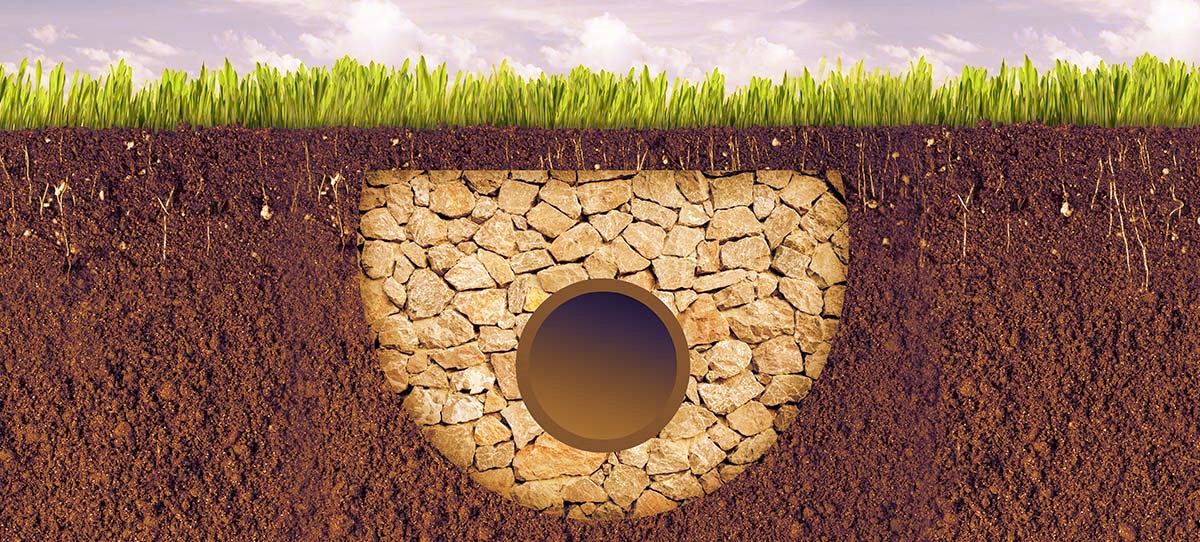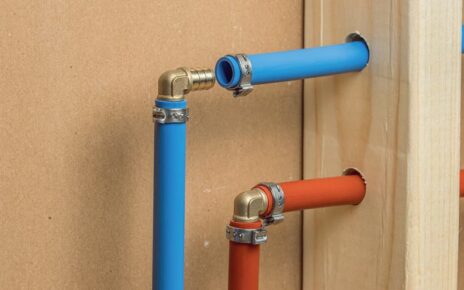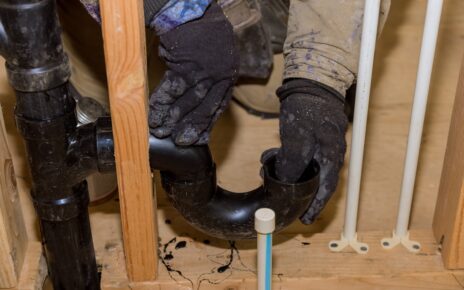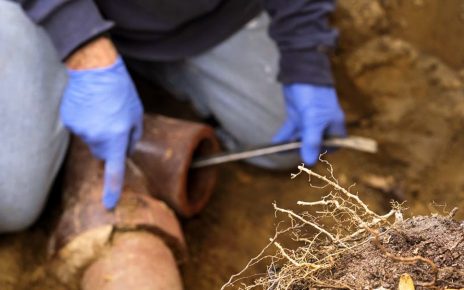French drains system is simply sloping earth ditches with a perforated drain pipe hidden behind a layer of gravel.
In french drain system, the pipe directs stormwater away from undesirable locations, like along the basement, and deposits it in more desired locations, like the city drain service pipe, an under rain bucket, or a reservoir.
Table of Contents
What is French Drain System?
A French drain system appears like a rock drainage ditch from the outside and, when installed properly, as a lovely hardscaping piece. A drain service pipe that is angled to move water away from the house is embedded in that gravel. A french drain installation on your property may be located by looking for the uncovered pipe end on the incline. Water cannot collect in the ditch because every component of the French drain system is made to simply enable water to travel through. Water flows through the perforations in the perforated pipe and through the gravel or stone.

How French Drains Work
The essential concept behind a French drain is to provide water an unimpeded pathway to follow instead of accumulating and flooding the ground. This is achieved by using a hollow, perforated pipe that can collect and transport the water from the yard to a designated outlet, such as a municipal sewer system or a rain barrel. The drainage pipe is wrapped in a water-permeable material to prevent weeds, soil, and other debris from blocking the holes in the pipe. Additionally, the pipe is covered with several layers of stones or gravel. By substituting soil with stones or gravel, you help the water flow down into the drainage pipe because it’s much easier for water to move through the larger gaps provided by packed stone than it is for the water to flow through densely packed soil.
Every component of a French drain is designed to make it easier for the water to move down from the surface, through the stones, through the unblocked perforations, into the hollow drainage pipe. The drainage pipe should be set at an angle so that when the water enters the pipe it promptly begins flowing away from the home to prevent water build-up and flooding.
Just keep in mind that if you do not use a water-permeable material to wrap the drainage pipe, the water cannot enter the drainage pipe, so the flooding problems will continue. Each material used in the installation needs to improve the flow of the water, otherwise, the French drain becomes ineffective.
The Benefits of French Drain Installation
French drain system is used to control groundwater, as opposed to gutters, which catch rain as it falls from the roof. Imagine that water tends to collect in a specific low area of your land after a downpour. That issue might be solved by rerouting the water’s flow using a French drain service.
For “wet” basements, or basements where water presses up against the foundation and slowly seeps through, a french drain installation also offers a solution. However, water close to the foundation may be diverted and dumped somewhere else via a French drain service.
You may need to install a French drain system indoors if water seeps into your basement despite seeming good exterior drainage. For french drain installation, a trench must be cut in the basement slab along the foundation’s edge, piping must be laid in the trench, and a sump pump must be installed to transfer water from the inside to the exterior.
How to Construct a French Drain
If you are familiar with the purpose of a French drain and believe it could be the solution you need, you may be wondering how to go about building one.
This is a task that is commonly undertaken as a do-it-yourself project; however, it is important to ensure that you use the appropriate materials and carefully consider the drain’s endpoint and what you plan to do with the excavated soil.
While French drains were traditionally constructed without a drainage pipe, it is now recommended to include one.
According to experts from EasyMerchant, if you do not have access to piping and landscape fabric, you can create a drain that adheres to traditional principles. However, it is important to note that this alternative method may not be as effective or durable.
Once you have addressed the aforementioned considerations, you can begin the construction process:
- Mark out the desired route using spray or stakes and string.
- Dig the trench, which can be done by hand if it is small enough; otherwise, you may need to rent a mini digger. When excavating the sides of the trench, remember to slope them instead of digging straight down. EasyMerchant emphasizes the importance of a minimum slope of 45 degrees to ensure a smooth flow and stable ground.
- Once the trench has been excavated, it will need to be lined with a permeable geotextile fabric. This prevents sediment buildup within the trench. Leave around a 300mm overlap on each side, which will be folded over once the trench is filled.
- Fill the base of the trench with aggregate, up to approximately one-third of the way up. Use larger, coarser stones for this step. EasyMerchant suggests using a 10-20mm pea shingle for optimal results.
- Now, place the perforated land drain pipe into the trench. According to EasyMerchant, these pipes are typically 100mm wide and should have perforated holes facing downwards. They emphasize that this step is crucial because the hole placement determines the successful removal of water. Otherwise, water will need to accumulate in the pipe before draining out of the holes.
- Once the pipe has been placed (ensuring it is straight and has a 1:50 fall towards the drainage area), fill the remainder of the trench with more gravel, stopping just below the top.
- Fold over the membrane and add a decorative layer to finish the project. This can be fine gravel or even turf.

Times to Avoid French Drain System
While a French drain system can help certain yards that are marshy, it cannot solve every drainage issue. French drain installations are made to transfer water off your property or to a location where it won’t harm your house, much like the rain gutters on the roof of your home. To enable the French drain system to move water away from the property, there must be a sufficient slope. If not, it will just pool in the French drain service ditch, exacerbating the drainage issues in your house.
Consider where the water will finally go when determining if a French drain system is the best option for your water drain problems. A suitable section of the landscape, a roadway, a municipal sewer, or the waste area should be where the system drains (such as near a tree or to a rain garden). It shouldn’t drain into the yard of your neighbor. If that is the case, you should call 24/7 your professional drain service.
French Drain System (FAQ)
How do I know if I need a French Drain System?
If you notice water accumulating around your foundation, basement, or other areas of your property, or if you live in an area with heavy rainfall or poor drainage, a French Drain System may be a good solution.
Can I install a French Drain System myself?
While it is possible to install a French Drain System yourself, it is typically recommended that you hire a professional to ensure that the installation is done properly and that the system will be effective in directing water away from your property.
How much does it cost to install a French Drain System?
The cost of installing a French Drain System can vary based on factors such as the size of the area, materials used, and other considerations. For detailed and regularly updated pricing information, you can refer to my article, where I provide a comprehensive breakdown of French Drain installation costs: French Drain Installation Cost – Is It Worth the Price?.




